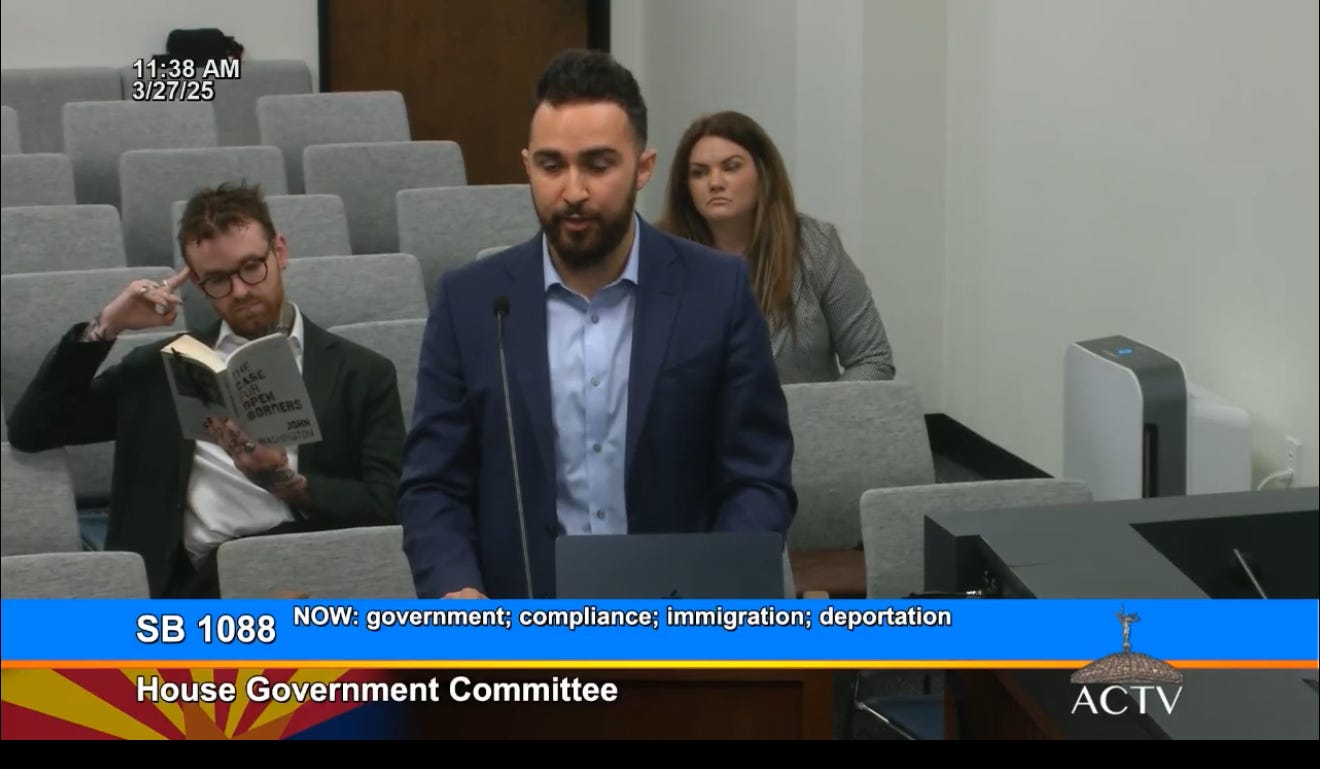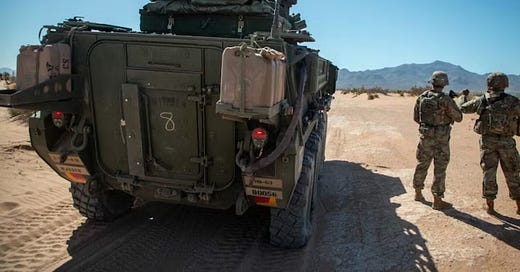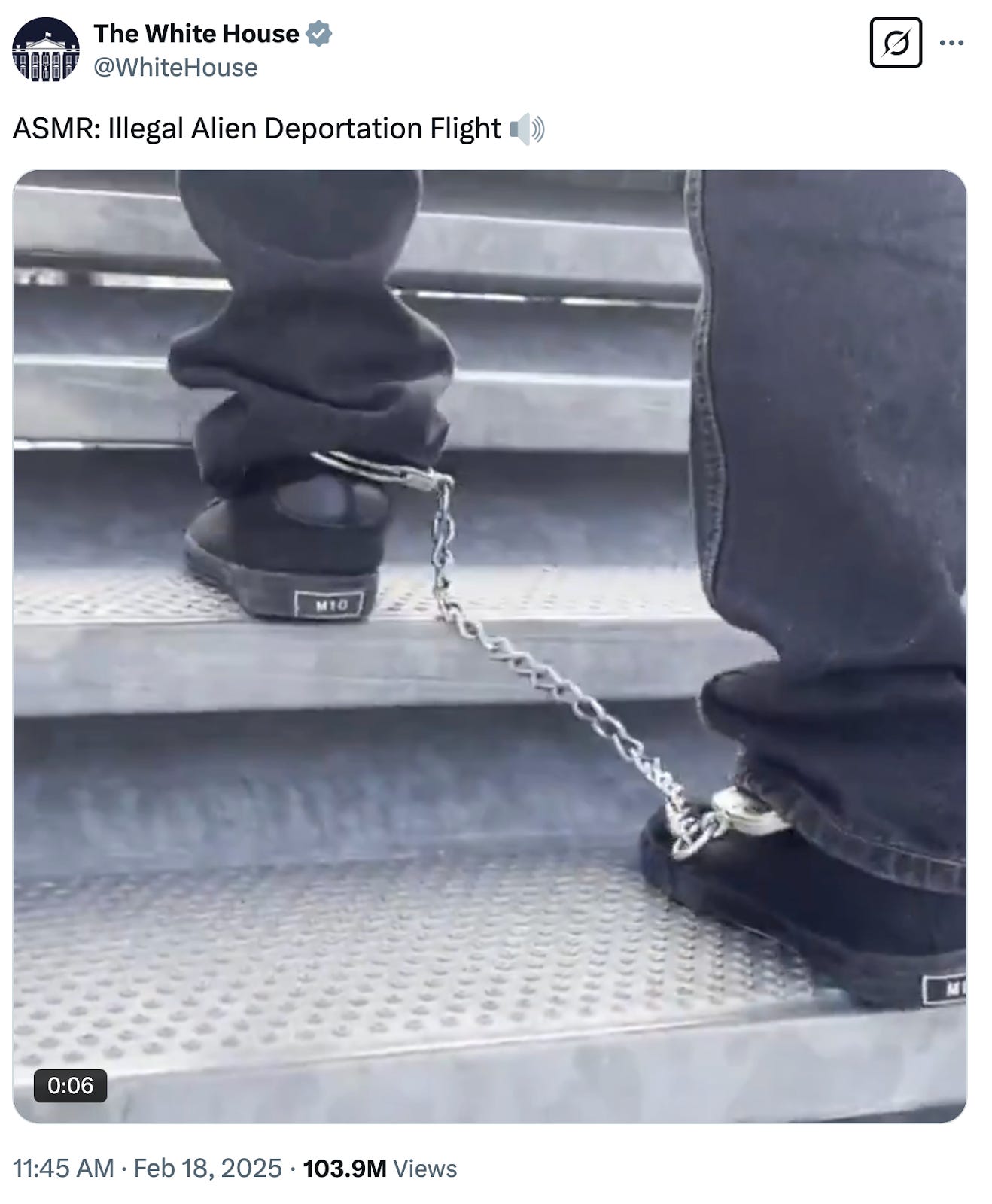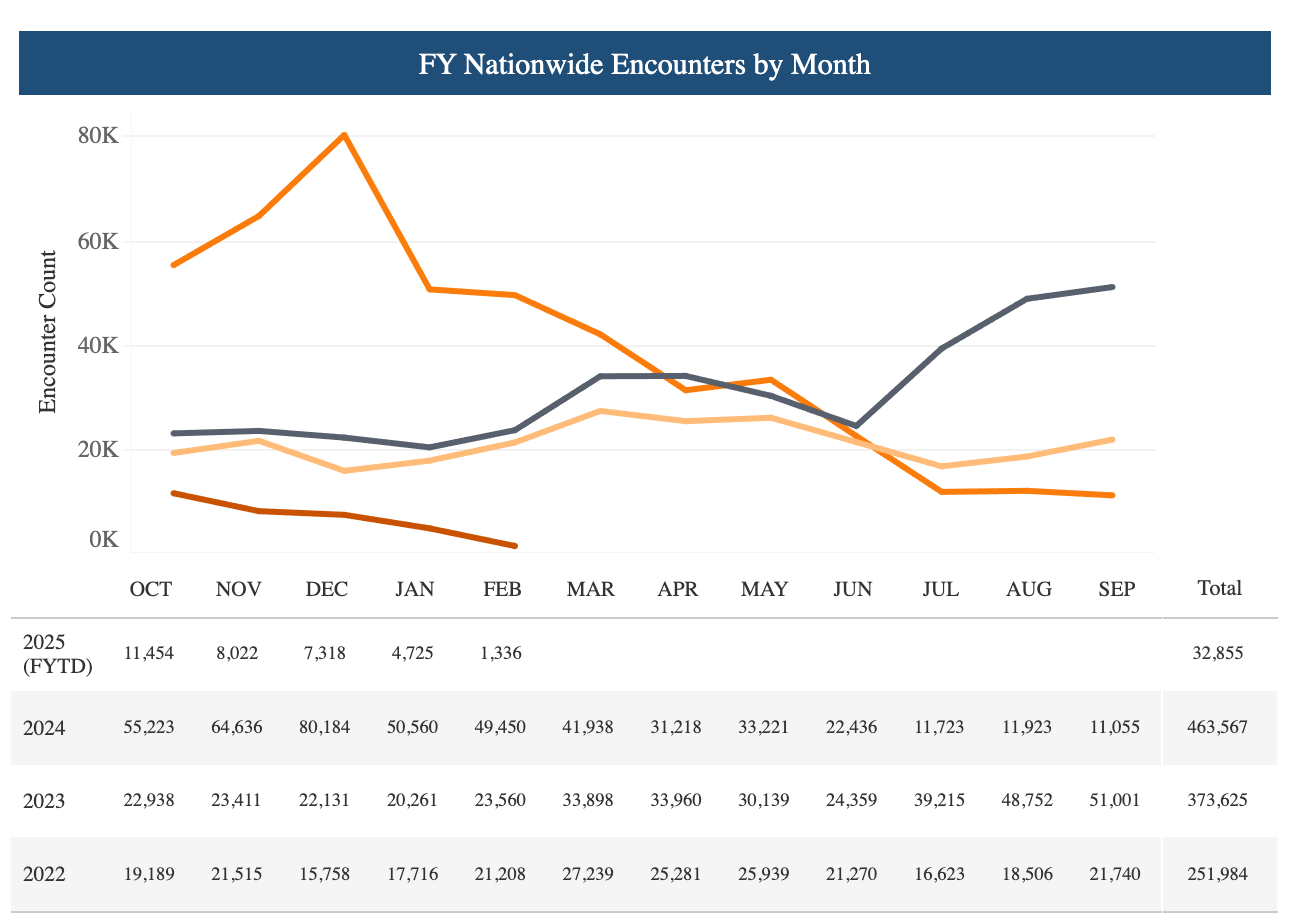
Bored at the border
These are not the egregious national security gaffes you’re looking for … All your bases belong to Cochise County … And Trump’s water wall, Trump’s Department of Rubble and Trump’s border dogs.
The U.S. military is unleashing the dogs of war on the southern border.
Gone are the days of governors sending National Guard troops to help Border Patrol agents with paperwork or hands-off surveillance. They did it to score political points, of course, but there was usually at least a hint of recognition that they were taking an extraordinary step, and there were always strict limits on what troops could do.
No longer. A press release from the Department of Defense on Tuesday reads like a dog pulling at its chain.
“Until now, the U.S. military mission at the southern border has been static. Service members have been engaged mostly in stationary detection and monitoring activities. But no longer.”
Before we get into the order issued by Defense Secretary Pete Hegseth — and all it means for Arizona, which will play home base for the military’s border efforts — let’s take a moment to acknowledge that at least part of the reason to ratchet up the level of border theatrics is to distract from other problems.
Hegseth was caught sharing military attack plans on Signal with the editor of the Atlantic. It was a boneheaded move that would have wrecked the career of anyone involved, and maybe landed them in prison, if they weren’t tight with Trump. But the same people who are thumping their chests about sending the military to the border are doing everything they can to hide the fact that they screwed up in a major way.
Ok. Back to the border.
This month, Secretary of Homeland Security Kristi Noem snapped and posted pics and video of herself posing in front of semi-nude Venezuelan migrants packed into cells at an El Salvador prison. The White House also released an ASMR video of deportations last month, making light of people in chains being forced onto airplanes.
It’s worth taking note of what’s happening here: The federal government’s attitude, tone and rules of engagement are changing. And Arizona lawmakers, and even the governor, are following suit.
The Trump administration is pushing the military to play an ever larger role in border enforcement. Since the inauguration, Trump has sent several waves of troops to the border. So far, the administration has stationed more than 9,000 active-duty soldiers in Arizona and other border states, including about 2,500 who were already there.
The biggest change this week is that soldiers are going to roam around the Arizona borderlands, rather than do stationary work, like data entry or sitting on top of a hill, as they did in the past. The military is also sending eight-wheeled, armored vehicles to the border. The plan is for soldiers to patrol the border in these Stryker vehicles or on foot.
It looks like for the next four years, you’re going to see armored vehicles in Customs and Border Protection news releases, or used as props for members of Congress and sheriffs in photo ops. Not to mention robotic attack dogs, like those on display at next month’s Border Security Expo in Phoenix.1
But terrifying new tech and soothing ASMR videos are just one prong of the Trump administration’s new strategy on the border.
Earlier this week, the Washington Post reported the Trump administration’s plan to create a “buffer zone” along the border which would allow the U.S. military to apprehend migrants.
Federal law doesn’t allow the military to do civil law enforcement, but they are allowed to arrest people for trespassing on a military base. If the border itself is considered a military base, then they can pretty much arrest migrants, or anyone else, anywhere along the border.
If that gambit doesn’t work, Trump officials could invoke the Insurrection Act of 1807 to allow troops to arrest migrants anywhere, as Politico noted this week.
Trump doesn’t mind pulling out old laws that are rarely used. He already invoked the Alien Enemies Act of 1798 — which had only been used three times before in U.S. history — to round up immigrants in the interior of the U.S.
Ramping up solutions for a plummeting problem
But right now, boredom might be the biggest obstacle that the new border troops face.
Illegal crossings have plummeted over the past year or so. The drop started in early 2024 when former President Joe Biden struck a deal with Mexican officials to clamp down on migration before people could make it to the U.S. border.
Then, as soon as Trump took office, those illegal crossings plummeted to record lows.
That has led to a kind of absurd situation where agents vastly outnumber illegal crossings.
In the Tucson Sector, there are now three times as many Border Patrol agents as illegal crossings per month. The roughly 3,700 Border Patrol agents in the sector, which covers two-thirds of Arizona’s border with Mexico, reported 1,300 apprehensions in February, according to federal statistics, down from a peak of 80,000 in December 2023.
Although most of the troops are stationed in Texas and the proposed buffer zone would start in New Mexico (before expanding westward to Arizona and California), the headquarters of the military mission will be in Cochise County.
Officials at Fort Huachuca were tight-lipped when the Arizona Daily Star asked them for details last week. But a few days later, the Department of Defense started sending out news releases.
And the Trump administration is far from done. Just yesterday, Reuters broke the news that officials are going to use military spy satellites to watch the U.S.-Mexico border.
Even Democrats love border enforcement
Meanwhile, at the state Capitol, Democratic Gov. Katie Hobbs sees cracking down on the border as smart politics.
She wants to increase the state's payout for “Local Border Support” grants by about a third, from $17 million last year to $23 million in the upcoming fiscal year, as the Mirror’s Gloria Rebecca Gomez reports. Republicans (and one Democrat, Tucson swing district Rep. Kevin Volk) want about twice as much funding, or $50 million.
The grants, which have been a part of the state budget for at least a decade, haven’t traditionally gone toward actual immigration enforcement.
But in this hypercharged environment, progressive groups are worried Hobbs will capitulate on the funding and, perhaps more importantly, the language of the Republican proposal, which states the money is for officers that “deter and apprehend” people suspected of “drug trafficking, human smuggling, illegal immigration and other border related crimes.”
That exact language has been used since at least 2019, proponents note. But the tone of the national conversation, and the lengths that the Trump administration is willing to go to get tough on border crime, have changed significantly since then.
“(Hobbs has) shifted to the right on immigration policy as governor, moving away from early pro-immigrant initiatives like a scholarship fund for Dreamers and supporting hostile federal legislation like the Laken Riley Act, which authorizes the indefinite detention of undocumented people accused of low level crimes, like shoplifting, in a bid to portray herself as tough on the border ahead of the 2026 election,” Gomez writes.
And while that border funding is perhaps the most likely point of agreement between the Democratic governor and Republican lawmakers, it’s just a tiny portion of Republican lawmakers’ anti-immigrant agenda.
“Before we get started, just a few questions”: Republican Sen. Wendy Rogers’ SB1268 would force hospitals that accept Medicaid payments to ask patients if they’re citizens.
See something, say something: Republican Sen. Jake Hoffman’s SB1088 would allow lawmakers or any random person to spark an investigation into a city or city contractor they suspect isn’t cooperating with ICE, DHS, CBP or any executive order about immigration or deportation. Cities could lose state-shared revenue for not complying.

As lawmakers debate legislation to force cities to comply with ICE, Arizona man reads “A Case for Open Borders” by local reporter John Washington.Forced compliance: Senate President Warren Petersen’s SB1164 would force local law enforcement agencies to enter into agreements with federal immigration authorities to enforce federal immigration laws.
Paying your own bounty: Hoffman’s2 SB1111 would require banks and Western Union to charge a fee on any money wires to foreign countries, and use that money to give police agencies a bonus of $2,500 per confirmed deportation.
It’s all about Trump: Republican Rep. Teresa Martinez’s HB2099 would require the governor, attorney general, cities, towns, and counties to enforce federal actions, orders, and programs related to the enforcement of federal immigration laws, though that requirement would self-destruct at the end of Trump’s term.
We could go on, but you get the picture: If Republican lawmakers had their way, Arizona would be pitching in to help Trump’s deportation efforts with a lot more than simple police grants.
Trump’s Mexico policies aren’t limited to tariffs and border security. Last week, he refused a request from Mexico to send emergency water deliveries to Tijuana — breaking a decades-long norm between the two countries. Today’s edition of the Water Agenda explains the situation, and takes readers on a tour of the Arizona-Mexico border’s many water-related complexities.
This week’s Education Agenda thumbs through the pages of the Project 2025 document, which highlights Arizona as a model for the future of America’s education systems, and which Trump seems to be basing his education policy decisions on.
And if you’re wondering what military robotic dogs at the border might look like, the A.I. Agenda’s latest edition on the current state of robot tech might provide some clues.
Years ago, when Curt covered the border, he went to one of those border tech expos. Afterward, he was talking to a Border Patrol agent who characterized the expos as “A bunch of people trying to sell us shit we don’t need.”
CORRECTION: A previous version of this post incorrectly identified SB1111 as being sponsored by Republican Sen. John Kavanagh. It is Hoffman’s bill.













